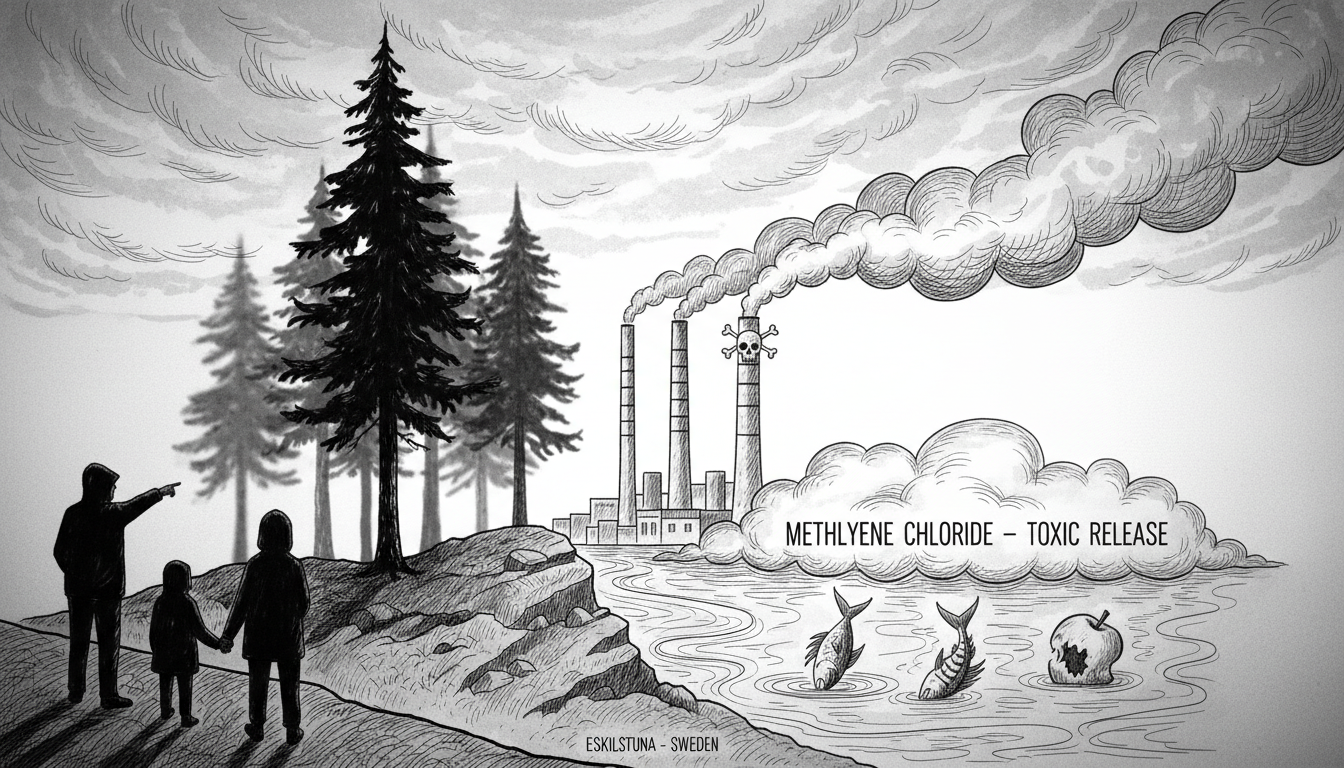A Swedish company received permission to use and release large amounts of methylene chloride. This toxic chemical has been banned in Sweden since the 1990s.
Senior Material plans to begin production in early 2026. Their planned emissions created widespread concern in and around Eskilstuna, a city in central Sweden. Local residents worry about how the releases might affect air and water quality.
Three scientists with expertise in methylene chloride answered questions about the substance's potential impacts. They explained how emissions could affect the surrounding environment.
The chemical plant's operations raise legitimate environmental questions. Communities near industrial facilities often face similar concerns about air and water safety.
Local officials approved the emissions despite the chemical's known toxicity. This decision highlights the ongoing tension between industrial development and environmental protection.
What specific risks does methylene chloride pose to agricultural areas? The scientists addressed how the chemical could potentially affect fruit crops and groundwater supplies.
Eskilstuna residents expressed particular concern about their drinking water sources. The city draws water from local groundwater reserves that could be vulnerable to contamination.
The planned chemical releases in central Sweden represent a significant environmental decision. Balancing economic activity with public health protection remains challenging for communities worldwide.
